ModaLisboa Capital | Lisboa Fashion Week - Day 1 & 2

Read the introductory prologue to ModaLisboa Capital by The Fashion Standup, here…
Are you back yet? Good, then let's begin.
Day 1
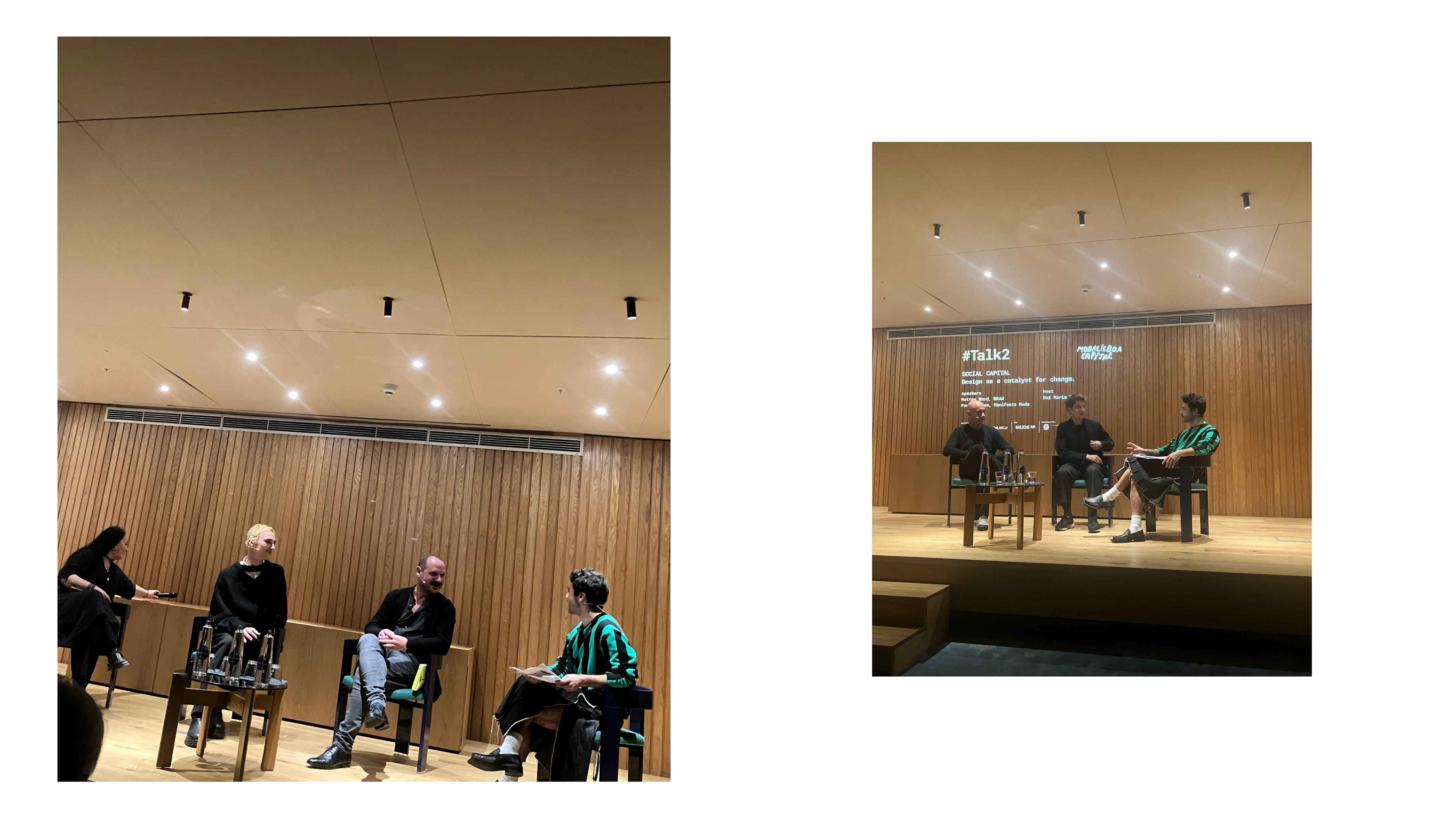
Fast Talks (Talk 1: “Cultural Capital - An industry under the influence” + Talk 2: “Social Capital - Design as a catalyst for change” + Junk - Screening two docuseries’ episodes)
Fashion and Culture are two extremely vast universes and it would be strange if Fast Talks did not reflect such diversity. The frantic writing of notes contains so much essence that it is difficult to put them into the sense of sentences. Likewise, the screening of two episodes of the documentary series Junk opens so many doors in thought, so complex to manage that finding their tangibility in words is an arduous task. So here are the main lessons I learned:
- Fashion is so vast that it hardly fits into the education system. Studying Styling or Fashion Design does not formulate a job description, since the possibilities multiply every day;
- In Fashion and Design there is no room for laziness. Design is a journey and therefore we must travel and explore;
- We are moving from the Age of Information to the Age of Curation , we have to contrast our perspectives with those of others in order to find our individual authenticity and, therefore, originality and creativity;
- We are very used as a society to having all the information at our fingertips, but creativity still needs the sensory and mental experience of books;
- If we work in Fashion, we must know how to get out of the bubble and see the “real world”, so that we can be fully aware of the impact of our work;
- The problem of the industry is not confined to the industry itself, but rather to society, to excessive consumption habits and the poor distribution of wealth;
- And to this conjecture is added hypocrisy, added to the pseudo-charity of donated clothes that end up in endless landfills in Ghana. As a society, we are ephemeral in our concerns, because 12 years after the Rhana Plaza disaster, we only focus on the construction conditions of the factories, but not on the real conditions of the garment workers.
Day 2
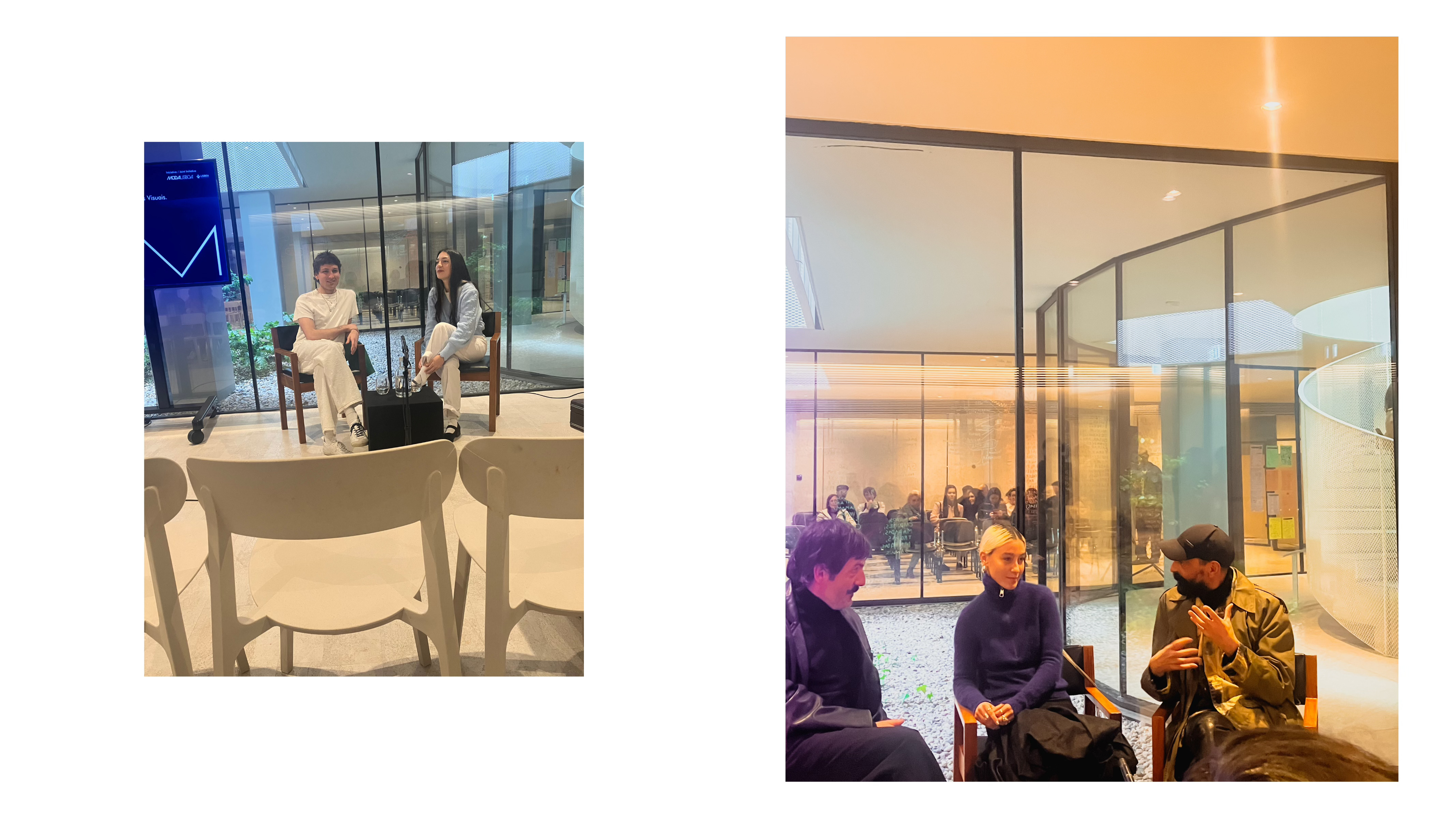
#Dialogue 01 + #Dialogue 02
For Fashion to engage in dialogue with Art, there was no better place than the recently restructured Modern Art Centre of the Calouste Gulbenkian Foundation.
Diogo Mestre directed a large part of the first dialogue, in which for about 20 minutes, we were led to reflect on: the timings of Art in contrast to those of Fashion, as well as the objectives of each activity.
And if at first we find more differences than similarities between Art and Fashion, at second we find the opposite. Closer approaches between artists and creatives were combined with people leaving the city to live. And although the countryside can be enriching to inspire creation, workspaces can still abandon the capitals… So the interior needs more capital, of various types, to become a creative and creative hub.
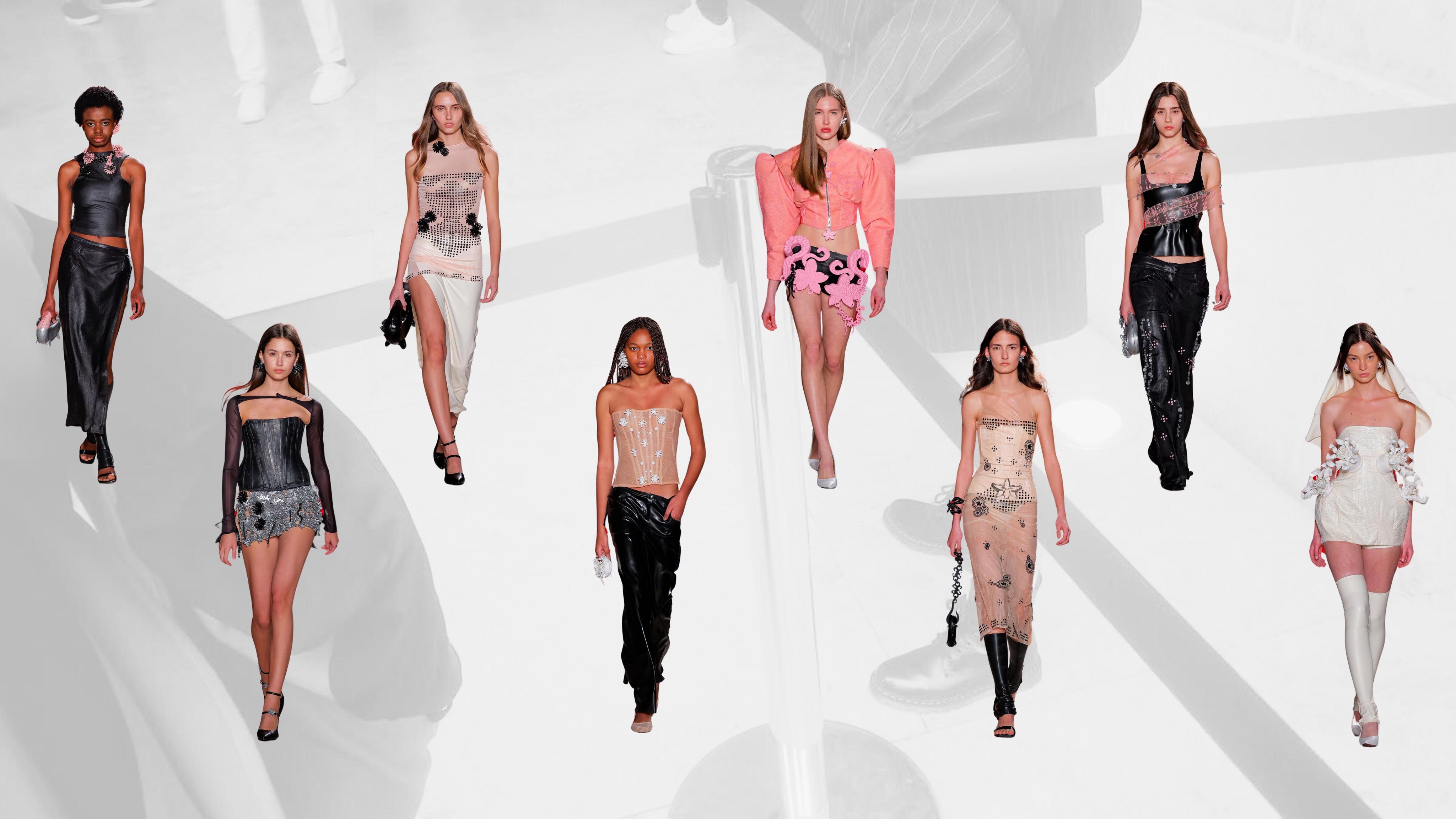
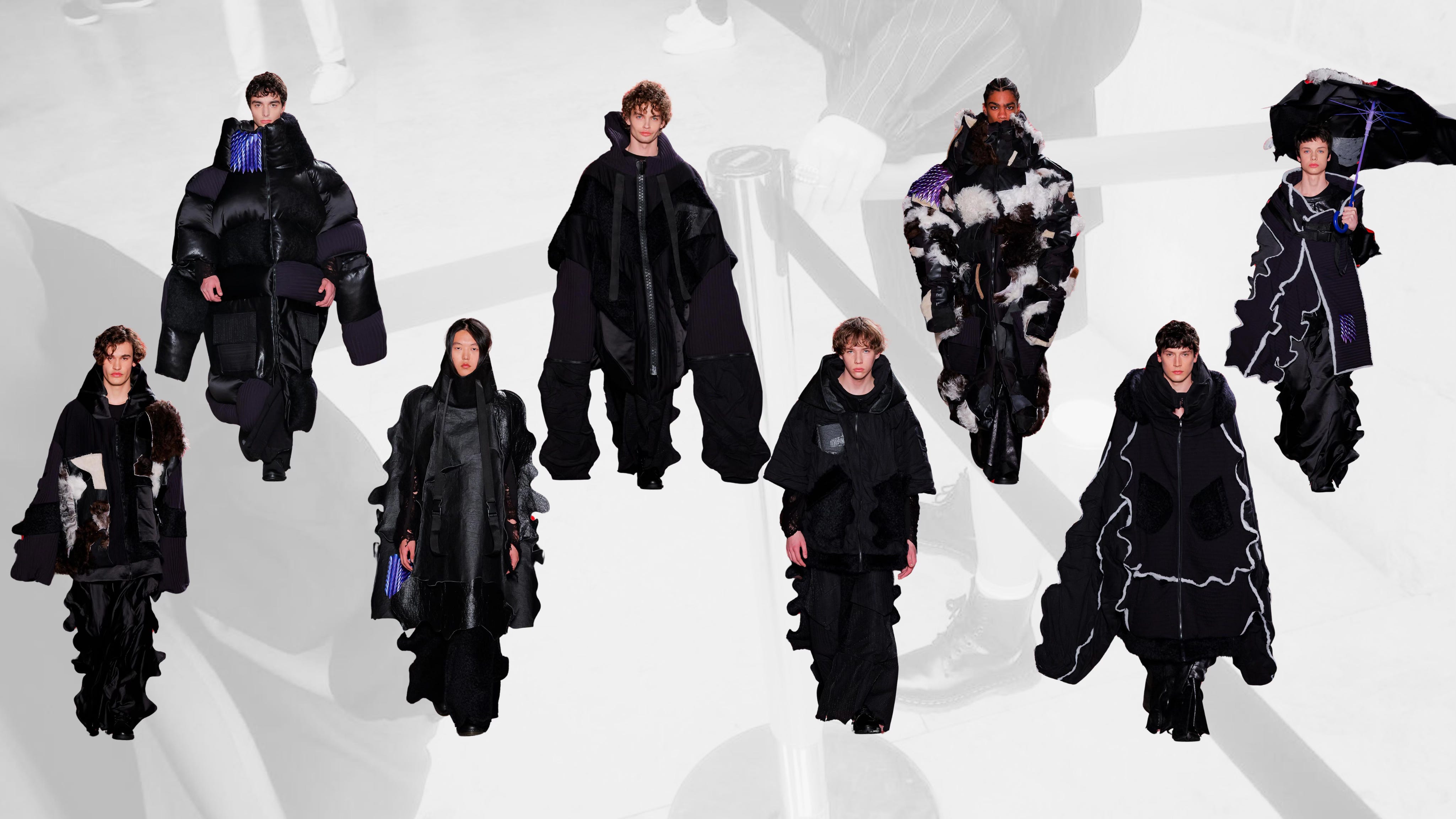
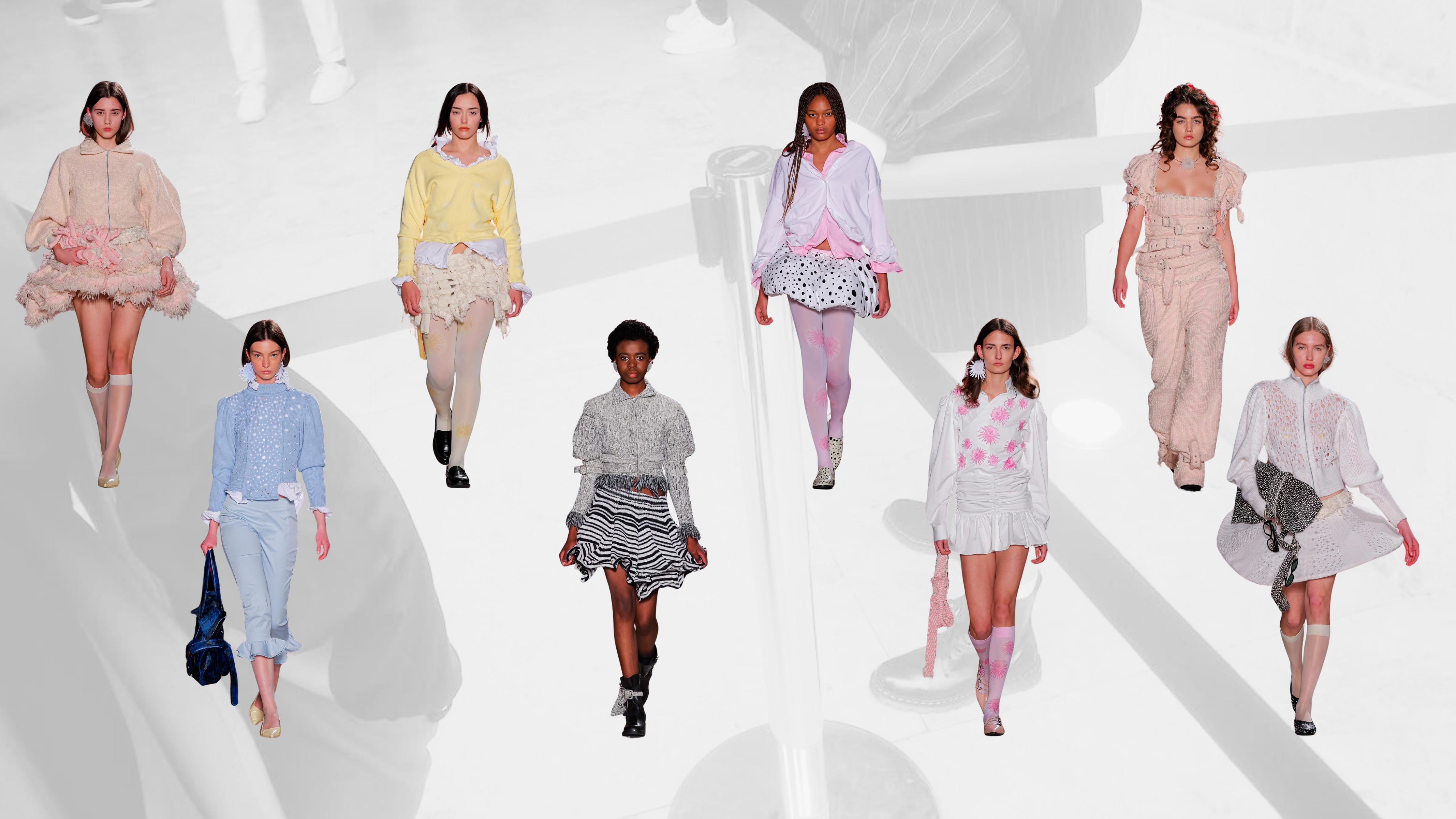
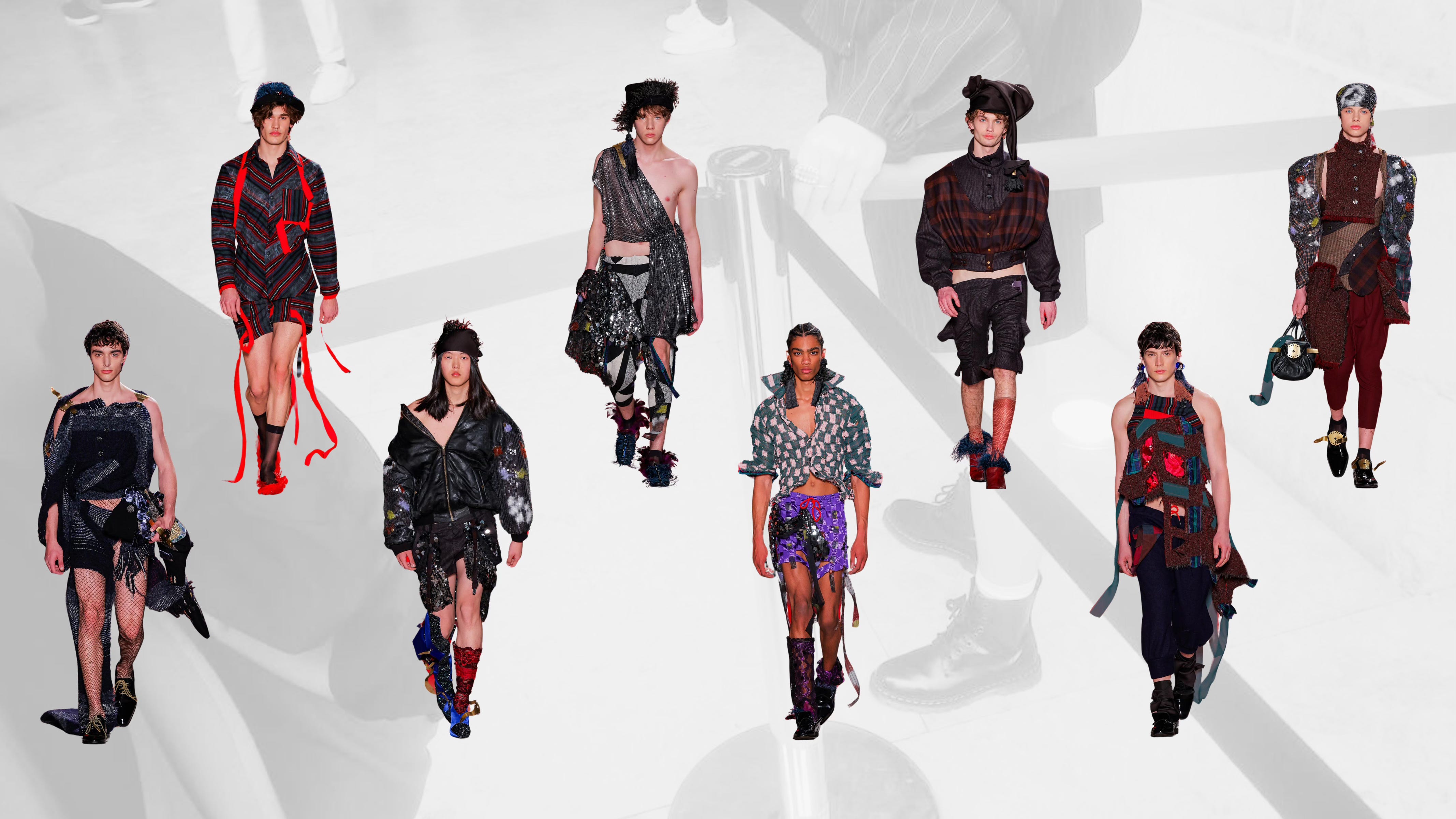
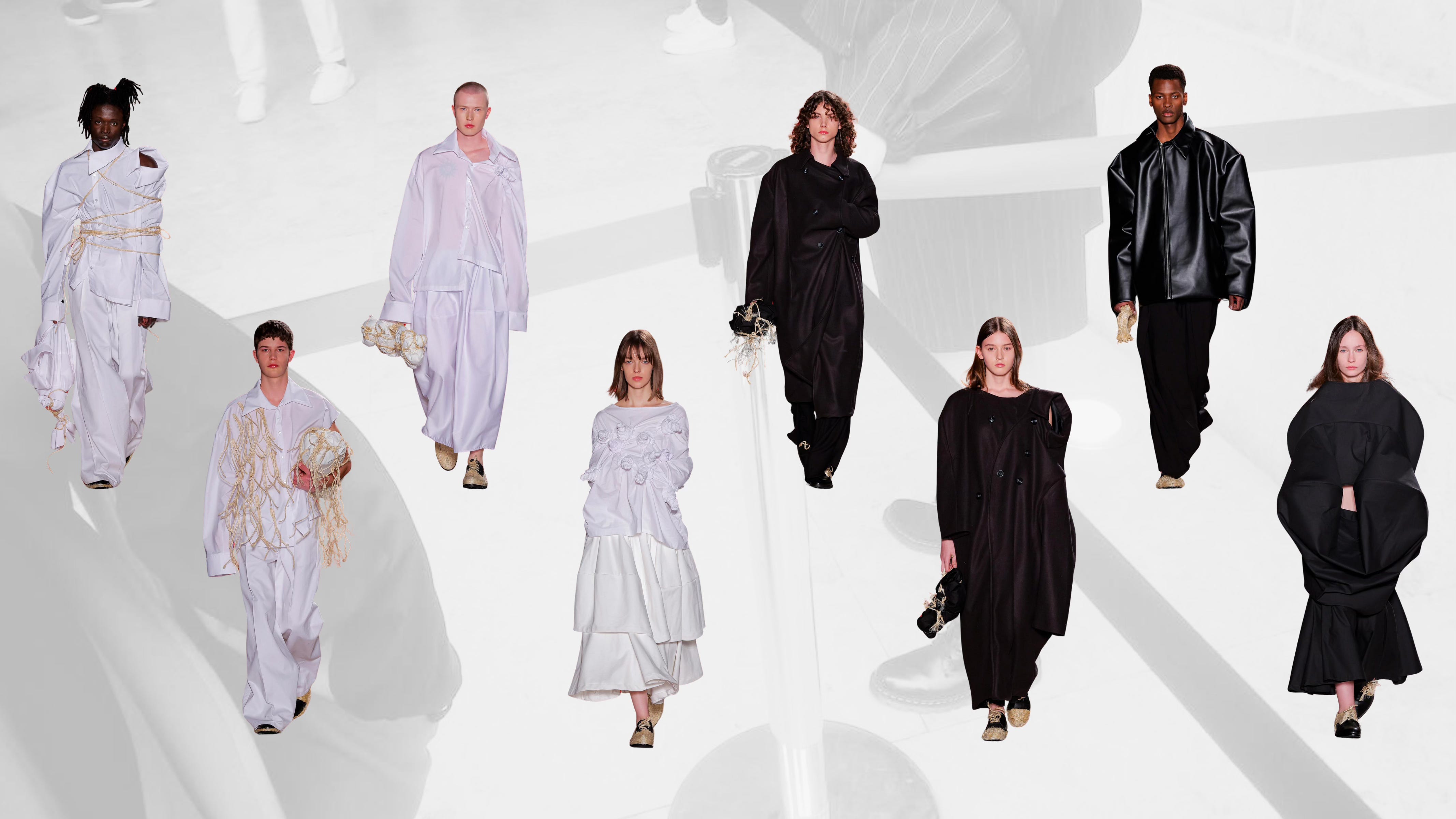
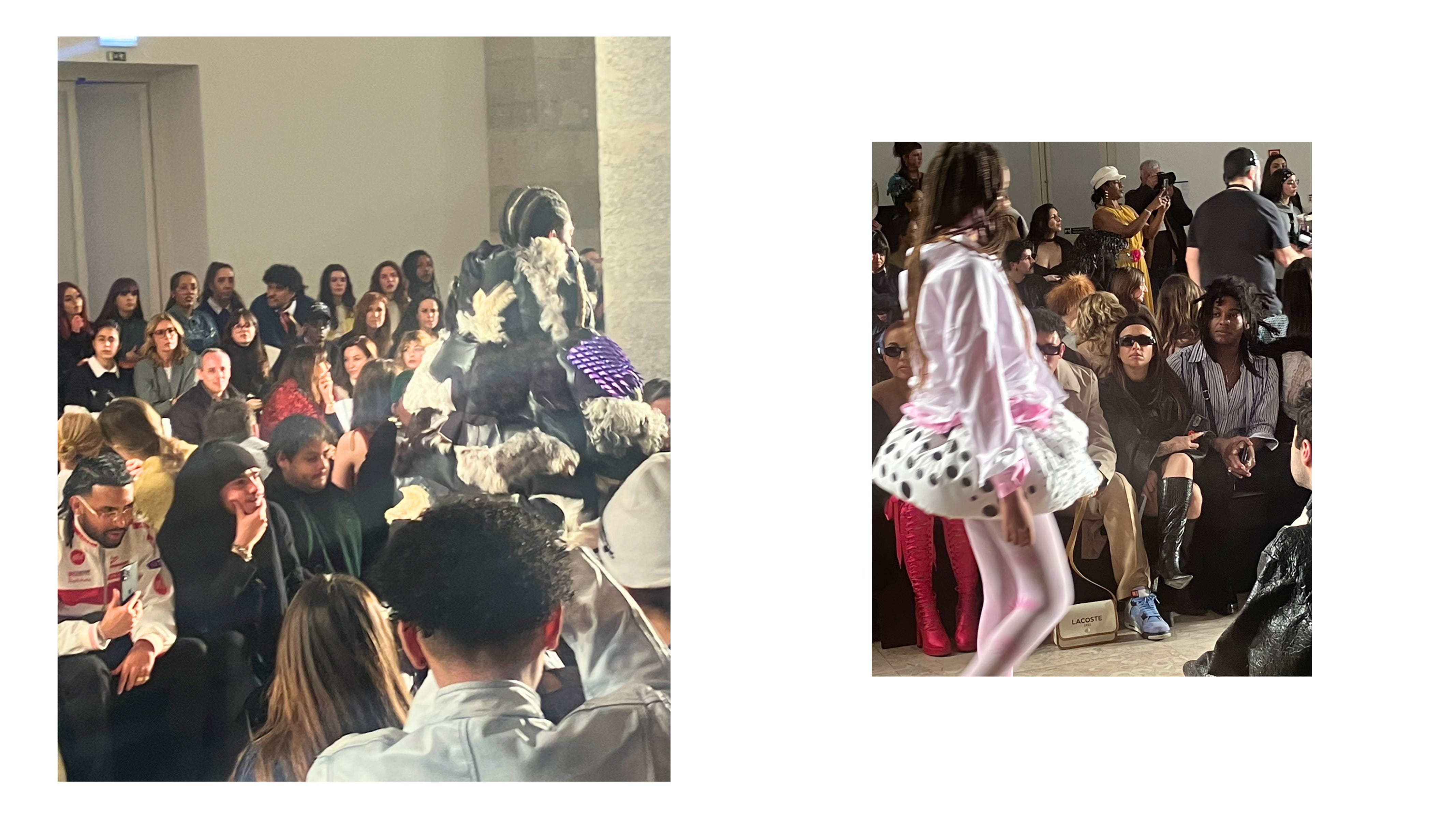
Sangue Novo
In this second phase of the Sangue Novo Contest we witnessed evolution and witnessed growth.
Dri Martins continued the alliance between Fashion and Technology, through the use of Laser Cutting and 3D Printing. Putting into practice what was advocated in her collection memo that sustainability and good practices within Fashion are a path and not a destination.
In black, Klein blue and hints of white, Duarte Jorge brings volumes, organic shapes and large scales in a mastery of construction and modeling. In a concept that addresses: the end of the middle class; the fight for freedom; resistance against oppression. This collection stars rebels who emerge from the darkness - the “Anomalies”. What do they wear? The materialization of Cyberlight - “2112. Onyx District”.
From “Vagar” to “Efémera”, Francisca Nabinho continued the traditional weaving techniques, creating magnificent structured skirts… But she left behind the vibrant sweetness of pink and reduced the scale of the components… Nabinho teaches us the lesson - we need Vagar (time) to build greatness.
Who are we after we are completely free? Who are we the next day? We wake up to return to conformity with what society expects of us… But the tension between two worlds persists, this is what Gabriel Silva Barros explores. “De Volta ao Mar” (back to the sea) brings to life fishermen with fluid identities who the night before were in “Masquerade at the Gentlemen’s Club.” The night at the cabaret that presented itself as opulent, exuberant and gender fluid is still present in the silks and kitten heels, which mix with flannel. Materials that were once pieces and now disintegrate to have a new life.
Purity and pain, love that creates or can destroy were the basis on which Ihanny Luquessa focused. Creating total black or white looks in straight cuts and using “classic” typologies and textile manipulation. Luquessa makes us rethink the way we wear clothing, from asymmetrically buttoned shirts to collars on one shoulder, to coats worn back to front and vice versa.
In this edition, the ModaLisboa X IED - Istituto Europeo di Design Award (scholarship and Master’s Degree in Fashion Brand Management) went to Duarte Jorge. Gabriel Silva Barros won the ModaLisboa X RDD Textiles Award (internship at the company, development of a collection with RDD materials, accommodation and scholarship). ModaLisboa and Showpress also grant the winners press office and showroom from the communications agency - ModaLisboa X Showpress Award.
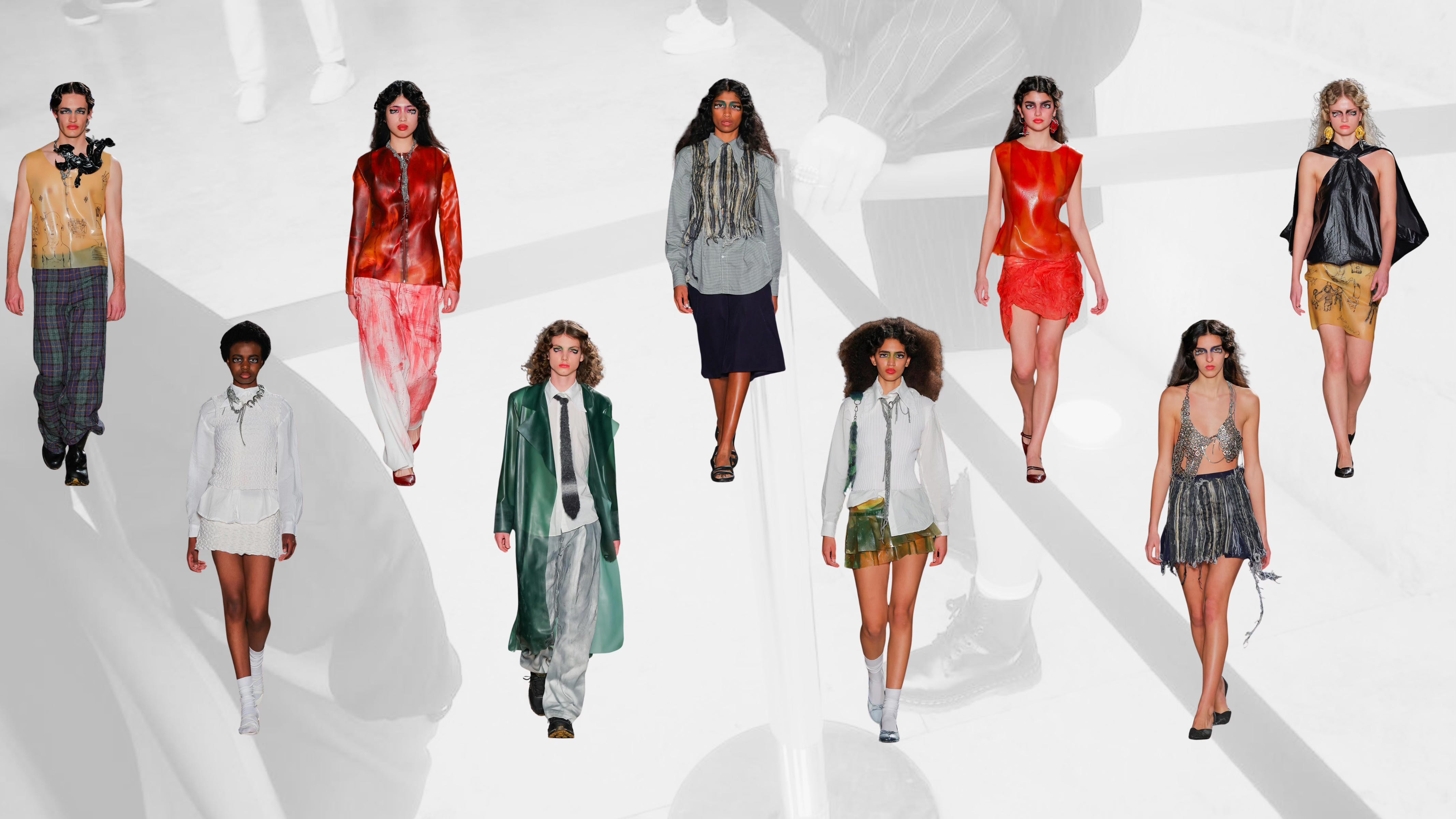

Inês Barreto
The winner of the ModaLisboa X IED Istituto Europeo di Design Award from the Sangue Novo edition of ModaLisboa Core (March 2023) returned to Lisbon and to the catwalk. This presentation on the Workstation platform is part of the prize you received. This award had as its protagonist the Master in Fashion Design, at IED Milanom, where he developed this collection.
This is a coming of age as a designer for Inês Barreto. Greater mastery of the technique that was already being developed - latex production using liquid latex, in pieces in which more ma (a Japanese term that refers to the empty space between the body and the piece of clothing) is noticeable . Which combines the use of fabrics themselves.
The inspiration was O Livro do Desassossego (The Book of Disquiet) by Fernando Pessoa, bringing to the collection the philosophy that each piece is part of a greater whole, but that it is not dependent, but rather independent and at the same time interdependent.
“In a world that insists on placing people into fixed categories, the “Desassossego” collection celebrates the multiplicity of the self, honoring the beauty and complexity of existing as a “hidden orchestra.” It is not a symphony with a rigid structure, but rather a jazz-style ensemble, where each piece resonates with unique textures, colors and energies, coming together in spontaneous harmony.”
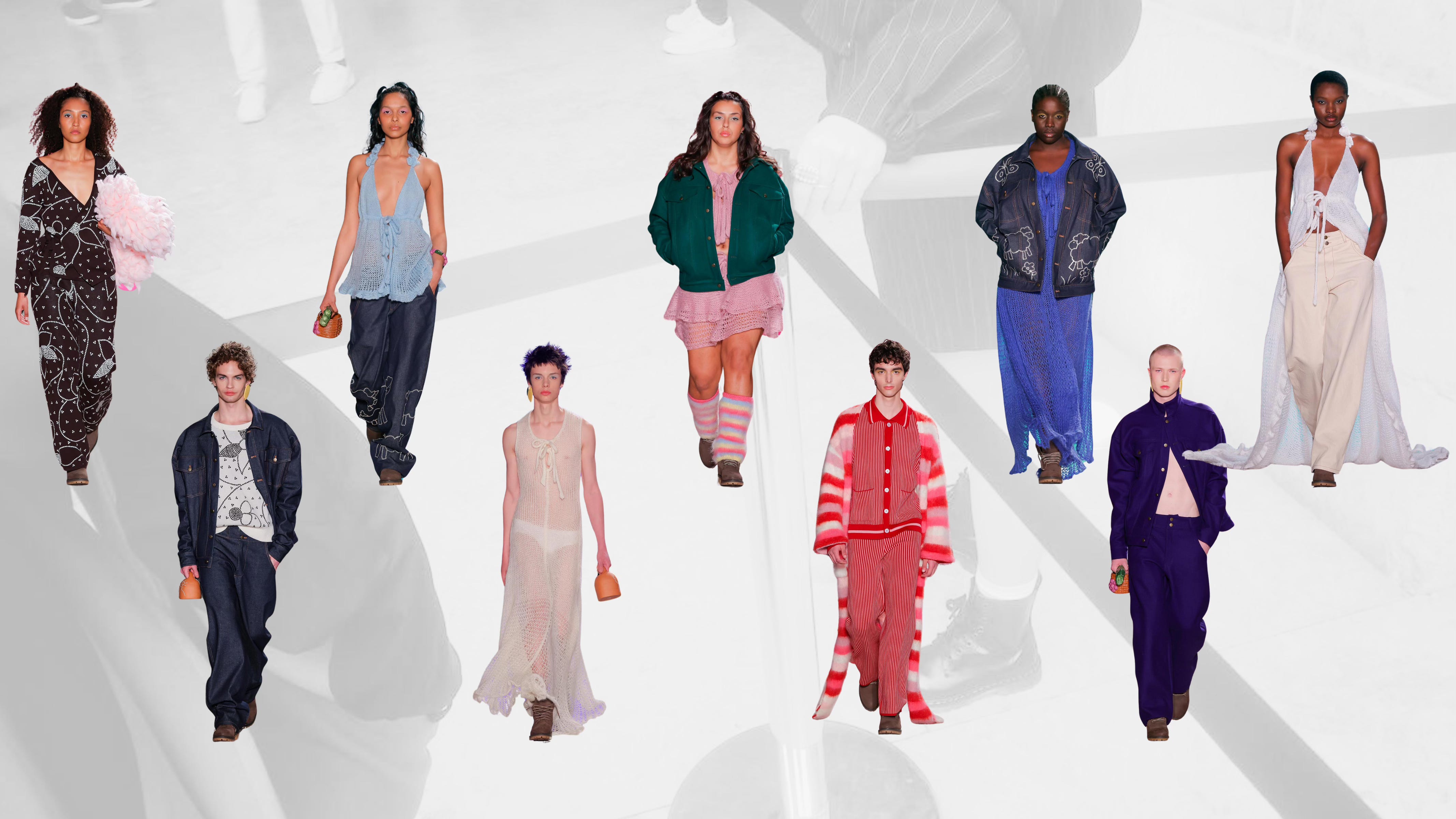
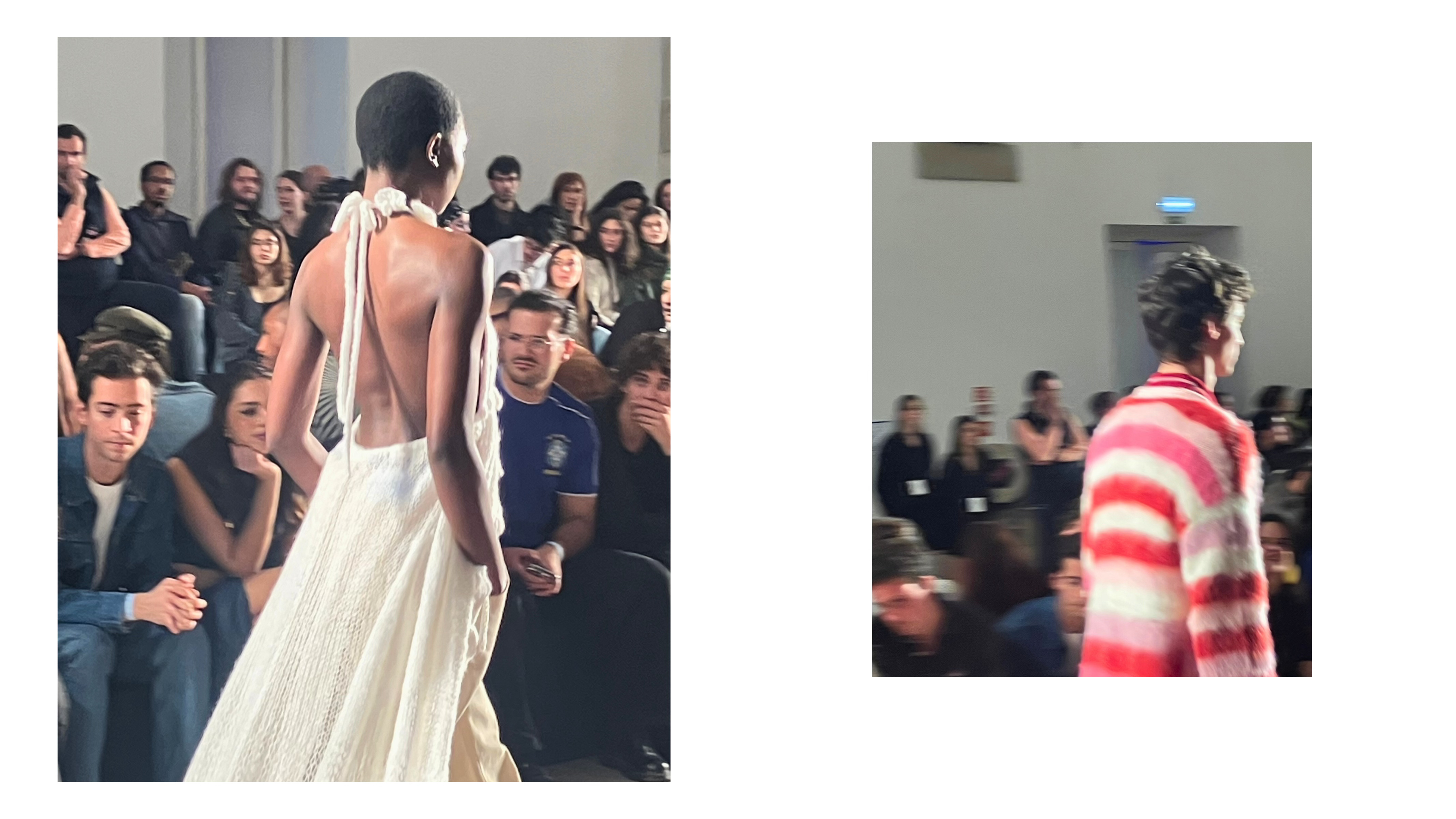
Mestre Studio
Diogo Mestre leads Gen Zs to reflect on our childhood and how we became teenagers. The types of pieces you used also tell the story of children's overalls. There was also no shortage of sequins forming the motifs of the little sheep we used to count on when we couldn't sleep before 10. If you're from the 99/2000 generation, you might not know, but anything could have sequins applied... but on jeans, it was a childhood delight. For these children, knitted wool coats, like those on the catwalk, “stinged”. These children gave way to young adults who see Mestre Studio's brushed wool pieces as an object of desire.
Warm and cool colors combined with jeans are not a first for the designer. But the addition of the acidity of the yellow to cleanse our palate was a true masterstroke.
Without a doubt, this member of the Workstation platform is a magnificent example of the new generation of Portuguese Fashion: aware of the entrepreneurship that needs to be developed, associated, without fail, with creativity, curiosity and experimentation.
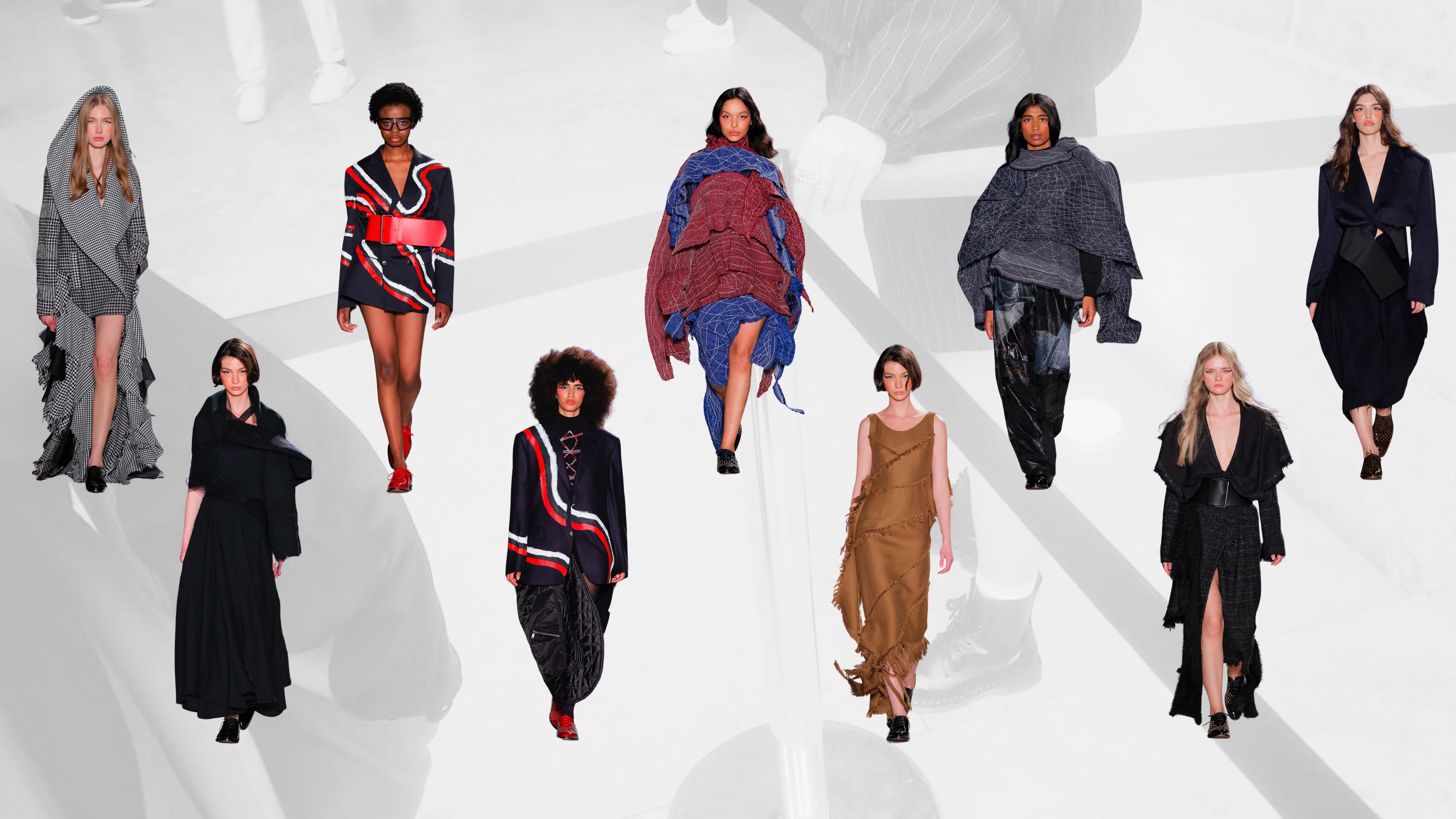
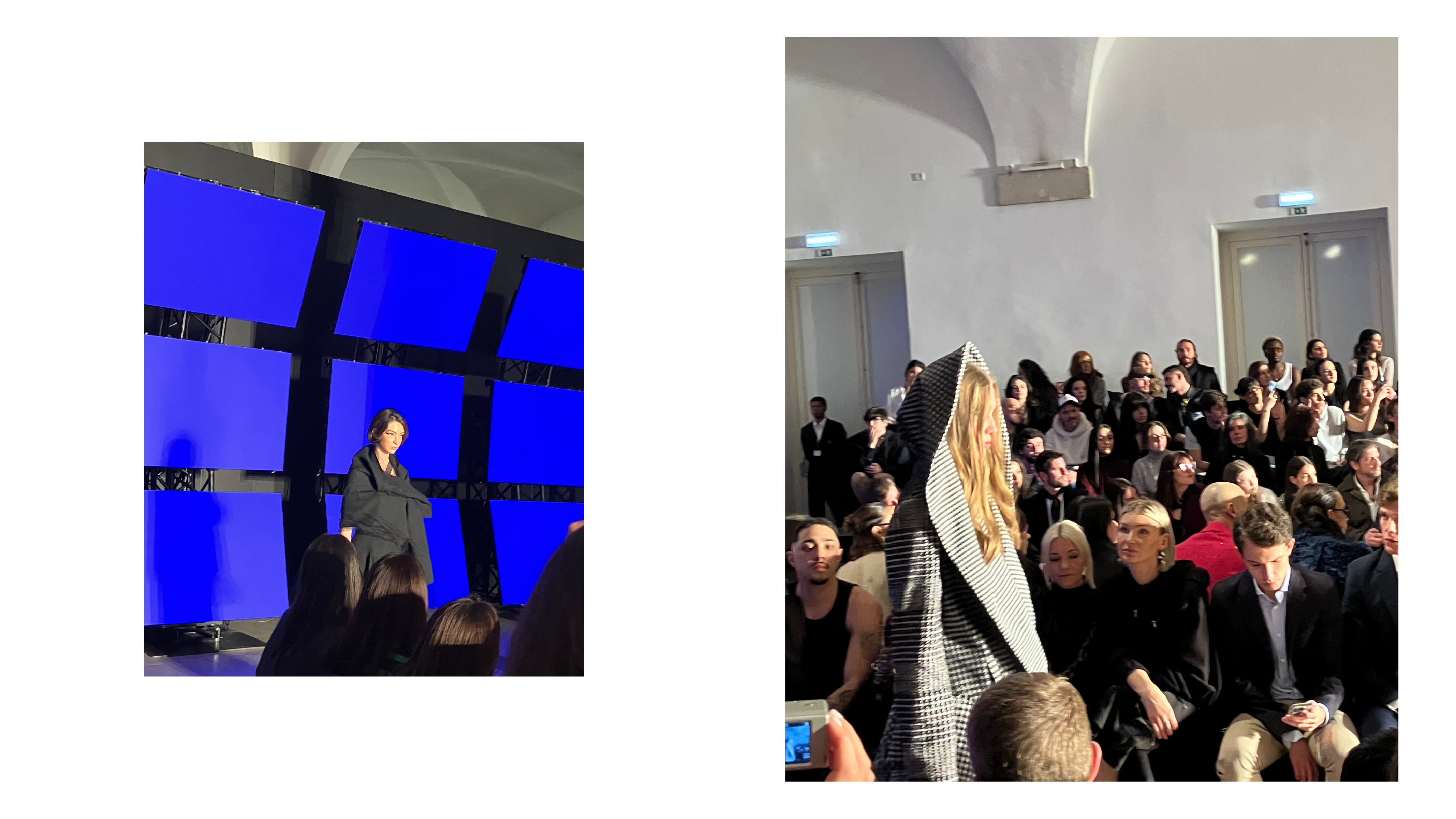
Alves/Gonçalves
Attending a show by Alves/Gonçalves, major figures in Portuguese fashion, is an event in itself. But the first time you do this and it coincides with the brand's return to the Lisbon Fashion Week shows is exciting. Being, at the same time, the first collection revealed after the death of Manuel Alves, it multiplies, unprecedentedly, the emotion of the show. So, in this case, I'm not talking about the collection, I need a few more decades of Fashion to be able to do that. But the decade and (almost) a half that I've been inside this beloved bubble allows me to talk about the parade. From the love letter we feel in the air and surrounding us… The sharing of a common feeling of nostalgia and melancholy without sadness, a celebration in the strength of red details and metallic touches.
A mourning of a beautiful black, in which we know we will glimpse light. A country that knows them as the “Manéis”, despite Manuel Alves and José Manuel Gonçalves not liking that nickname. A ModaLisboa Capital that gave a standing ovation, returning the love that José Manuel gave us that Friday night.
And so Alves/Gonçalves returned to the Mother House of national fashion.
Continues…
Let’s thread the needle of creativity with your coffee-fueled encouragement.
Please consider supporting The Fashion Standup on Buy Me a Coffee, here
